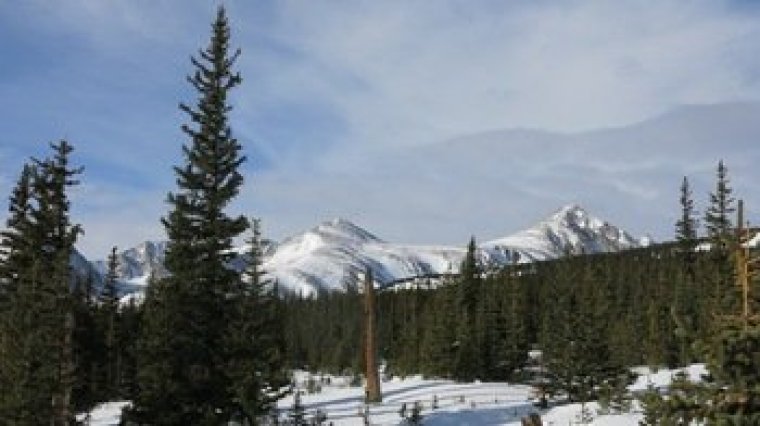| News / Science News |
Earlier snowmelt decreases streamflow, reduces forests' ability to regulate atmospheric carbon dioxide
NSF | AUGUST 17, 2016
Earlier annual snowmelt periods may hinder the ability of forests to regulate atmospheric carbon dioxide (CO2).

A Colorado Rocky Mountain forest during the winter-spring transition period. ![]()
The findings, predict that this shift in snowmelt timing each spring could result in a 45 percent reduction of snowmelt period forest carbon by mid-century.
Forests in seasonally snow-covered areas serve as key CO2 sinks, thanks to the natural processes by which trees take in carbon. This carbon uptake is restrained during winter, but increases to peak capacity in spring when snowmelt provides abundant water to trees.
University of Colorado Boulder (CU-Boulder) scientists working at Niwot Ridge in Colorado's Rocky Mountains studied 15 years of snowmelt and atmospheric CO2 data to determine the effects of changes in snowmelt periods.
They found that earlier snowmelt triggered by climate change reduces forests' ability to take CO2 out of the atmosphere.
Snowmelt also provides water resources to downstream communities. Previous research shows that the timing and rate at which snow melts can affect the amount and quality of water available for vegetation, farming and fishing.
The researchers used a unique modeling system to study the effects of earlier snowmelt across various regions of the western U.S.
The results show that earlier, slower snowmelt, triggered by warmer temperatures, reduces streamflow. These slower "trickle" melts reduce percolation in hillslope soils and allow more water to evaporate, resulting in less streamflow overall.
YOU MAY ALSO LIKE



